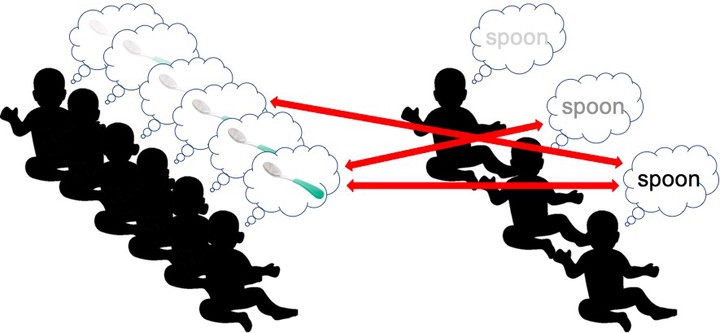
Abstract
A key question in early word learning is how infants learn their first object names despite a natural environment thought to provide messy data for linking object names to their referents. Using head cameras worn by 7 to 11-month-old infants in the home, we document the statistics of visual objects, spoken object names, and their co-occurrence in everyday meal time events. We show that the extremely right skewed frequency distribution of visual objects underlies word-referent cooccurrence statistics that set up a clear signal in the noise upon which infants could capitalize to learn their first object names.
Type
Publication
In Cognitive Science Society Conference Proceedings